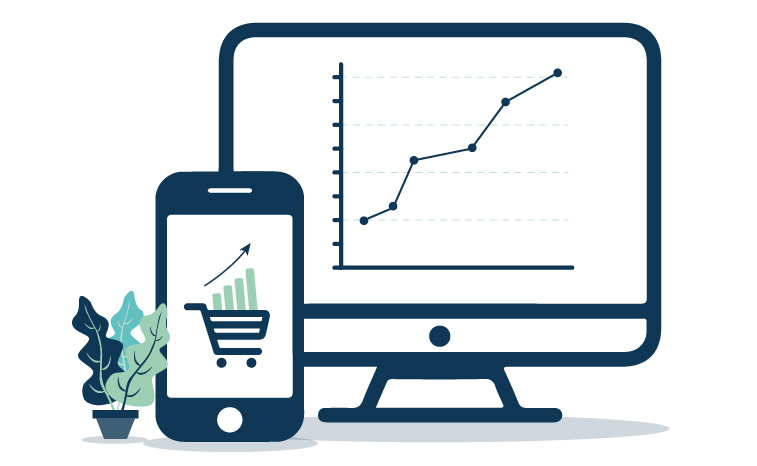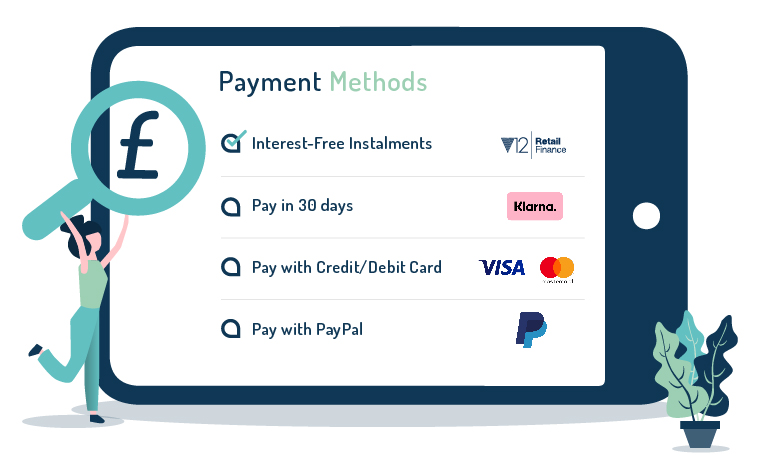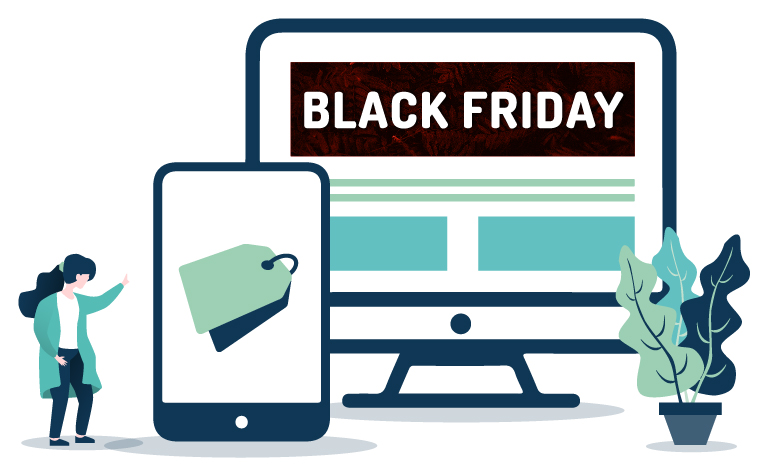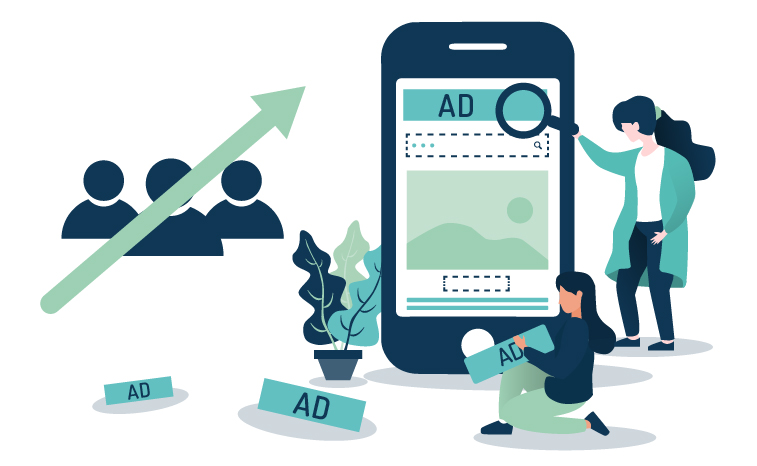
How to Prepare Your E-Commerce Website for Black Friday
Retailers across all industries are gearing up for the busiest time of year. Black Friday, Cyber Monday and the Christmas rush are all right around the corner, presenting some exciting opportunities to increase sales and revenue through all channels.
Typically, in-store sales have benefited the most during this period, with eager shoppers hitting the high street for exclusive deals and unmissable bargains. But in recent years, e-commerce activity around the time has risen to the same, if not higher, levels. And since the pandemic and its related disruptions, the shift towards online-first shopping habits has become ever more apparent, creating an even stronger case for e-commerce sales strategies to be a top priority. In fact, there is a whole shopping day dedicated to online sales – Cyber Monday – which falls on the Monday following Black Friday.
Now, working in retail, the history, details and importance of these events have probably already been engraved on your mind, so we won’t bore you with a recap. But we will point out some recent trends and changes for you to take into account as you prepare for this year:
- Black Friday and Cyber Monday have become week-long events, rather than singular days with deals starting sooner and lasting longer
- Consumers are more likely to buy from brands that offer convenient checkout and delivery options
- Buy now, pay later offers can influence purchase decisions, with 9.5 million UK consumers avoiding websites that do not offer the option
- Spend during the 2021 Black Friday sales period is predicted to be lower than it has in recent years
- Factors such as the supply chain crisis and hiked energy prices are growing concerns, predicted to impact retailers’ ability to offer and fulfil deals, and affect consumer confidence
Google search trends for “Black Friday” have declined over the past three years, with 2021’s figures lower than those of the same period in previous years.
Undoubtedly, this Black Friday and festive shopping season are on track to be a little more different than usual. As well as these trends and changes, there is still the lingering threat of the global health pandemic, which will likely push even more activity online. That said, there is an even greater reason to ensure your e-commerce website is prepped and ready, able to handle and process the surge in demand. Here are some things to consider:
1. Prepare for more traffic

On days like Black Friday and Cyber Monday or during sales periods, the volume of traffic on an e-commerce website can increase by up to 2 – 5 times more than what it usually receives. Therefore, retailers must ensure their website is supported by a robust server that can handle any spike in traffic, as sometimes, an increase in visitors and orders can cause a website to malfunction, or worse, go down.
The obvious issue is this will cause frustration to shoppers, who will then go elsewhere / to a competitor’s site which is still up and running and perfectly functional. Similarly, for those further down the sales funnel and in the process of making a purchase, a glitchy website can impact trust and deter users from inputting personal details to complete their order. These issues combined with the unexpected downtime can cause a business to miss many valuable sales opportunities, therefore impacting their revenue generation during the critical period.
2. Think about payment options

On a similar note, the checkout process, including the payment options offered can also impact order completions. As mentioned, consumers are more likely to buy from brands that offer convenient checkout and various payment options, such as buy now, pay later, finance-free point of sale credit, and secure online gateways to process payments.
Retail finance, such as V12, and buy now pay later options are typically used as incentives that can encourage more higher-value purchases as repayment is made more manageable with monthly instalments, or the option to delay payment until they have received and decided they are happy with the items.
These options, as well as seamless payment gateways help instil trust in consumers at the point of sale, encouraging them to proceed with a purchase safe in the knowledge that their personal details are protected. Therefore, during these popular shopping periods, these options can make all the difference in a consumer choosing you over a competitor, as well as maximise sales through different repayment methods.
3. Optimise the mobile experience

Mobile-first browsing has been the trend for some years now, highlighting the need for online offerings to be optimised for the smaller hand-held screens. The mobile experience must take into consideration traffic volume and payment, while also offering some unique features specifically designed for users shopping on the go and seeking convenience.
For instance, you can consider adding options such as Apple Pay or Google Pay at the point of sale for faster checkout. Responsive designs should also be used across the website and at all steps of the user journey, including forms, pop up information tabs and confirmation messages, to ensure the user receives the complete experience and is not left frustrated by incomplete or difficult to use features.
4. Switch up website banners

While the functionality of an e-commerce website should be a top priority, its appearance should not be overlooked, as this is what a customer will base their first judgments on. Therefore, it is important to ensure any images used, from website banners, right through to product shots are of high quality, visually appealing and engaging.
However, there is a balance to be found between quality and practicality as high-resolution images are larger and therefore can negatively impact the load time and site speed, which could have the opposite of the intended effect on customers.
It is recommended that the homepage and main landing pages feature banners and images detailing any Black Friday or sale offers. This is because these pages are typically those that will be visited first, particularly by those who find your website via search. As images are usually what captures the initial attention of a visitor, detailing offers visually in this way is a guaranteed way to get the message across, encourage interest and drive conversions.
Of course, there are a few best practice tips to follow, such as including click-through links for easy navigation, and ensuring images and banners are replaced once offers have expired.
5. Drive traffic through digital marketing

Having a well functioning website, some impressive incentives and a high-quality customer experience are all well and good, but will not guarantee visitors. Therefore, it is equally as important to implement some strategic digital marketing techniques to drive direct traffic to the site.
Businesses that have invested in ongoing SEO strategies are better positioned to capture leads through search engines. However, if SEO remains an item on your to-do list, short term advertising on Google or social media can help drive a spike in traffic. On Google, a paid-for campaign can place you in the top positions on results pages, or in Shopping results for searches of specific keywords. On social media, however, promoted posts and product ads can be highly targeted to demographics that best match your customer personas, in order to build greater awareness, increase reach and maximise conversions among those most likely to be interested in the offering.
These ads should be diversified throughout the Black Friday sale period in order to maximise exposure of different products and categories, as well as to combat fatigue, which audiences may begin to experience after being inundated with offers or the same ads. And in order to streamline processes and save resources during the busy time, ads can be planned in advance and scheduled.
6. Integrate and automate

Sales season aside, running a brick and mortar store and an e-commerce website can be time consuming and labour-intensive. Of course, during peak shopping periods such as Black Friday, the job becomes that much more demanding leaving room for missed opportunities and human errors which could cost the business.
Therefore, seeking ways to automate processes is key. For example, integration solutions with ERP, such as Pursuit, Microsoft Dynamics enable retailers to combine their online and offline activity in one, centralised place. In doing so, practices such as taking and updating inventory levels, product uploading, and order processing can be automated and synced across online and offline stores in multiple locations. Naturally, this reduces the manpower required for this area of the business, enabling more resources to be allocated to other activities, such as marketing, business development and customer service, which often get overlooked when busy.
As well as this, with the right systems in place, other online features such as limited stock, sale price launch, and cart price rules can easily be set up and managed through Magento, Shopify, WooCommerce etc. During these sales periods, where multiple deals and offers will be running all at once, flexibility and control are essential for effective order processing, error prevention and continuity.
7. Consider your customer support experience

As well as an increase in traffic and sales, there will likely also be a surge in customer service requests. With automated processes already in place, there is greater availability of staff to provide dedicated and personal customer service, which will leave shoppers more satisfied and likely to return.
Functions such as an online chat can make providing customer service quicker and more effective for both the business and the consumer. Other things to consider include website enquiry forms which encourage users to provide more detail about their request, enabling the business to filter and delegate submissions in order to save time and provide a more tailored service.
Website content can also be used to provide customers with as much information as possible, minimising their need to get in touch for more details. This can be done through long product descriptions, blog content, guides and landing page copy, all of which can also help with SEO.
Finally, social media accounts are another great way to provide updates on service, for instance, if phone lines are busy. These channels can be used as an alternative way to interact with customers, and if a high-quality service is provided in public, there is a greater chance of positive word of mouth and social shares among the customer’s own personal network.
For more information or advice on preparing your e-commerce website for Black Friday, please do not hesitate to get in touch. Our team’s expertise spans everything from Magento development and integration, to SEO, PPC and more.
Post navigation
Read More Blogs

Using Your Brand Content to Break the Bad News Cycle
As I write this, the UK government has just announced its most recent round of

UK Business & Innovation Awards 2022 Finalists
Autify Digital are finalists for not one, but TWO categories at the UK

Magento SEO Guide for Best Practices
In the ever-changing world of SEO, it can be hard to keep up with the latest
connect
Let’s Get to Work
Want to get your business noticed? We can’t wait to see how we can support you. Get in touch today and let’s get to work!
Get Started